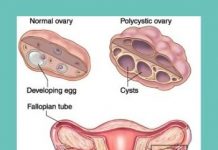For many years, women have been treated as “pre-surgical” patients during labor and were not given anything by mouth (otherwise known as NPO) except for an occasional ice chip. Even if the ice began to melt at the bottom of the cup, mothers were told not to drink it!
Gradually, hospital policies have begun to relax in the last several years to allow mothers more options for hydration. Some hospitals will permit mothers to drink clear fluids including ginger ale, broth, jello and popsicles. In many birth centers, there are options for eating solid foods as well. Mothers who choose birth centers typically can eat and drink as they choose during labor. Is it safe for mothers to eat and drink? Are policies on food and fluids changing?
The Reason for Restricting Foods and Fluids During Labor
The main reason why mothers have been discouraged, and in some cases, restricted from eating or drinking in labor is due to the risk of aspiration from contents of the stomach if the mother requires general anesthesia for an emergency cesarean.
The truth is that the risk of aspiration and serious complications from mothers who have had food or fluid in their stomachs is insignificant. Since many midwifery practices have allowed their patients to eat and drink, there have not been any reported increases in the maternal death rate due to aspiration, according to a 1993 review in the Journal of Nurse-Midwifery.
Many experts feel that the risk of aspiration has more to do with the skill level or expertise of the anesthesiologist and less from the content of the mother’s stomach or whether she has had anything to eat or drink during her labor. Therefore restricting foods and fluids to all women during labor may be unnecessary.
The Benefit of Foods and Fluids During Labor
New evidence points to the benefit of mothers drinking clear fluids and staying hydrated with sports drinks. This recent UK study reported that mothers who drank isotonic sports drinks during early and active labor did not have any additional complications as compared to the group who drank only water during labor.
One of the marked benefits in the group who drank sports drinks in labor was that they had a lower incidence of ketosis. Ketosis is a condition that results from a lack of carbohydrates. In turn, the mother’s body draws nutrients from its fat supply, which causes large amounts of ketones to accumulate in her tissues.
It also makes sense that mothers who stay well-hydrated may not require IV hydration. Eating and drinking will be help to prevent a drop in blood sugar and maintain her energy level throughout labor.
Does Drinking and Eating Cause Vomiting in Labor?
Contrary to the popular opinion that “what you eat or drink in labor will come back up”, the above-mentioned UK study showed that mothers who consumed sports drinks during labor were not any more likely to be vomiting during labor than those who had just water.
Do some mothers feel nauseous or vomit during labor? Often during the most intense times of labor or even when labor is progressing at a more rapid pace, nausea and vomiting is common. It is possible that eating a large meal or food that takes longer to digest might make the mother more uncomfortable during labor. But the truth is that eating or drinking will not cause mothers to feel nauseated or vomit more often.
The Best Drinks and Foods to Eat in Labor
While no studies have been conducted to date on the “best” labor drinks or foods, it makes good physiologic sense to drink and eat foods that digest more easily and contain less fat and acid. Popular labor drinks include electrolyte-balanced or sports drinks, diluted fruit juices and home-made recipes of labor drinks known as labor-ade. Foods that are easy on the stomach include mashed or baked potatoes, soup, toast or bagels, applesauce, bananas, yogurt or scrambled eggs.
Recipe for Laborade
If you are interested in making your own drink for labor, here is a laborade recipe taken from OmMama Pregnancy Pipeline:
1/3 cup lemon juice (preferably fresh-squeezed)
1/3 cup honey
1/4 tsp. sea salt
1/4 tsp. baking soda
1-2 calcium/magnesium tablets, crushed or
1 Tb liquid calcium/magnesium supplement











